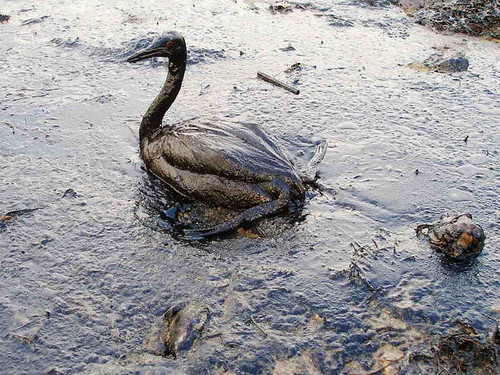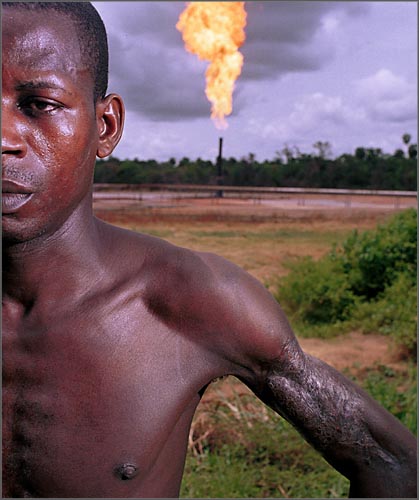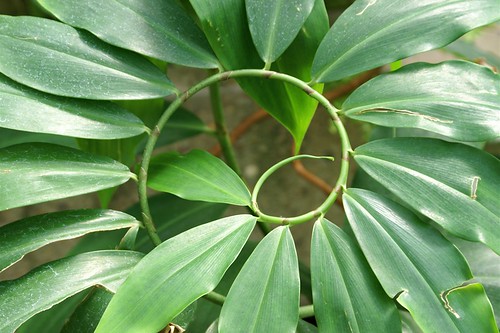


With gas prices skyrocketing and President Bush and other politicians calling to lift a ban against offshore drilling, a polarized debate has again flared up over the true risks and rewards of this approach to oil prospecting.
"There are extremes on both sides," said Judy Penniman of the American Petroleum Institute.
A federal ban was initiated by Congress in 1981 to protect sites off California and Massachusetts and has been repeatedly expanded since then. President George H.W. Bush put his own ban in place, by executive order, in 1991, and Bill Clinton extended it to 2012. Together, the rules now thwart drilling in Alaska's oil-rich Arctic National Wildlife Refuge and elsewhere.
Scientists and politicians disagree on how much effect any new drilling might have on prices at the pump. Further, they argue about potential impacts on the ecosystem.
Impact on marine life
Concerns over new drilling amount to more than just a worry about spills.
To find potential oil reserves, researchers send seismic waves into the ground. The waves bounce back to reveal the buried topography and can hint at a possible reserve. But seismic noise disorientates whales and leads to mass beachings, said Richard Charter, a government relations consultant for the Defenders of Wildlife Action Fund.
Laboratory experiments attempting to pin down the impact of seismic waves on wildlife often must rely on caged animals, which raises questions about whether the animals would have fled and avoided ear damage if they could have, note Robert McCauley and colleagues in The Journal of the Acoustical Society of America.
However, Andy Radford, a policy advisor at the American Petroleum Institute, isn’t worried. "[We] make sure there are no whales in the area when we are doing our seismic search," Radford said.
Several weeks ago, ExxonMobil suspended exploration near Madagascar because more than 100 whales had beached themselves.
Ultimately, the seismic tests only help geologists make educated guesses. "You never know until you drill," said Eric Potter, associate director of the Bureau of Economic Geology at the University of Texas at Austin. The usual outcome is failure, Potter said, sending wildcatters back to the seismic drawing board.
Questions on land too
There are also questions about the impacts on land.
Radford described advances that reduce oil drilling’s environmental footprint. For instance, oil companies are now able to drain several oil fields from one platform. And new horizontal drilling techniques allow more oil to be extracted from a single well.
Major infrastructure – such as roads, jet landing strips, repair shops, homes and industrial complexes – is, of course, still necessary and could disturb wildlife that is accustomed to pristine land, said Charles Clusen, director of National Parks and Alaska Projects for the Natural Resources Defense Council.
Similar concerns about wildlife arose before construction of the Alaskan Pipeline, built in the 1970s.
"But there hasn't really been any effect on the wildlife; they congregate near the pipeline and it doesn't seem to bother them," said UT's Eric Potter.
However, any development of the Arctic National Wildlife Refuge (ANWR) for drilling, as President Bush has long advocated for, could have a greater impact. Polar bears, caribou and other animals trek across this unique area to give birth, said Clusen. Birth is the most vulnerable time in a species’ life cycle and disrupting it will lead to diminished populations, he explained.
The true overall environmental impact of oil drilling is hard to gauge, due to the paucity of baseline studies, said Jeff Short, a supervisory researcher for the U.S. National Oceanic and Atmospheric Administration (NOAA).
In the wild, most animals quickly flush PAH, a toxin associated with oil wells, from their bodies — which is why PAH rarely concentrates in the food web and is of minimal risk to humans. The animal’s justifiably panicked immune response to PAH can cause cancer — especially if the animal is exposed continually by, say, living near an oil platform, explained Short.
As for human populations, many coastal communities depend on tourism and fishing — both of which may be affected by off-shore drilling by increased development, pollution and disruption of marine life habitats. Among traditional communities in the ANWR, some oppose drilling while others have cautiously welcomed it — within limits — for the improved access to jobs and amenities it could bring.
Spills and transportation
"The public doesn’t have a clear idea of how much oil is moved every day," said Potter. "The amount spilled is miniscule, compared to the amount that is transported," he said.
The industry now has a great track record, said API’s Penniman. "Back in the 1880s, we would have had a pretty good chance of ruining the world," she said, but technology and safety regulations are now significantly improved.
Today, according to the Mineral Management Service, of the billions of oil transported in U.S. water, 0.001 percent is spilled. Far more oil seeps naturally into the sea, reports the National Research Council (NRC). According to the NRC's most recent analysis, almost half of oceanic oil worldwide arises from natural processes. Oil spills contribute about 12 percent.
Even so, says Clusen, there are 300 to 500 spills every year, a number which will grow with increased production.
"And once you have a spill, you are pretty much screwed," NOAA's Short said. That's because oil spreads on water at a rate of one-half a football field per second. Recovery can take decades.
After 20 years of natural weathering, Prince William Sound — the area affected by the Exxon-Valdez spill — appears completely recovered to the casual observer, said Short, but animals high up on the food chain are just now starting to re-colonize.
Even a perfectly functioning oil well is a cause of concern due to "produced water," explained Short.
Produced water — which rises with oil and contains environmental toxins such as polycyclic aromatic hydrocarbons (PAH) — is usually tossed overboard. At high concentrations, the contaminants are lethal to marine life. At lower concentrations, according to lab experiments, they can cause birth defects, impaired growth and skewed sex ratios.
Prices at the pump
Estimates for the output of oil drilling sites can only accurately be given in very large ranges, Potter explained. For example, the Energy Information Administration predicts ANWR could produce between 1.9 and 4.3 billion barrels of oil, and that might not do much for our pocketbooks. In 2007, the United States consumed 7.5 billion barrels, according to the U.S. Energy Information Administration (EIA).
In the best-case scenarios, said Clusen, "we're talking lowering the price of gas by three cents, 20 years from now."
The American Petroleum Institute is more optimistic. "When we went into Prudhoe Bay [in northern Alaska], we expected nine billion barrels, and we have already pumped 15," Radford said. And the White House estimates that lifting the drilling bans would produce an extra 18 billion barrels from various locations.
But the federal EIA sees no short-term value in additional drilling, a process that takes years for awarding contracts and obtaining permits.
"Access to the Pacific, Atlantic, and eastern Gulf regions would not have a significant impact on domestic crude oil and natural gas production or prices before 2030," the EIA states on its web site. "Leasing would begin no sooner than 2012, and production would not be expected to start before 2017."
Potter and others note that drilling that began 30 years ago, such as in Prudhoe Bay, Alaska, are helping meet today's demands.


















No comments:
Post a Comment